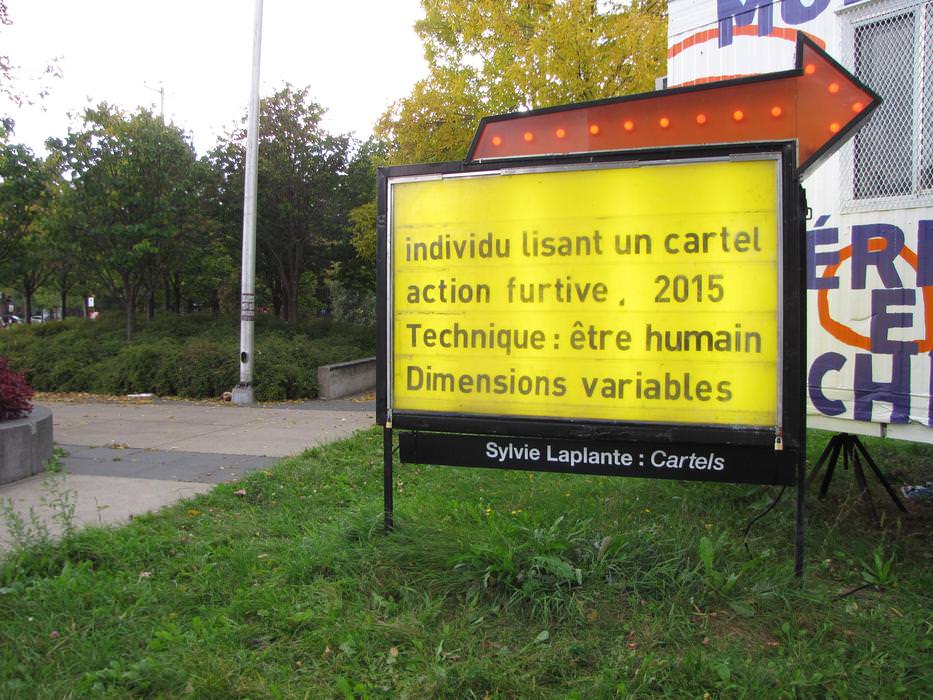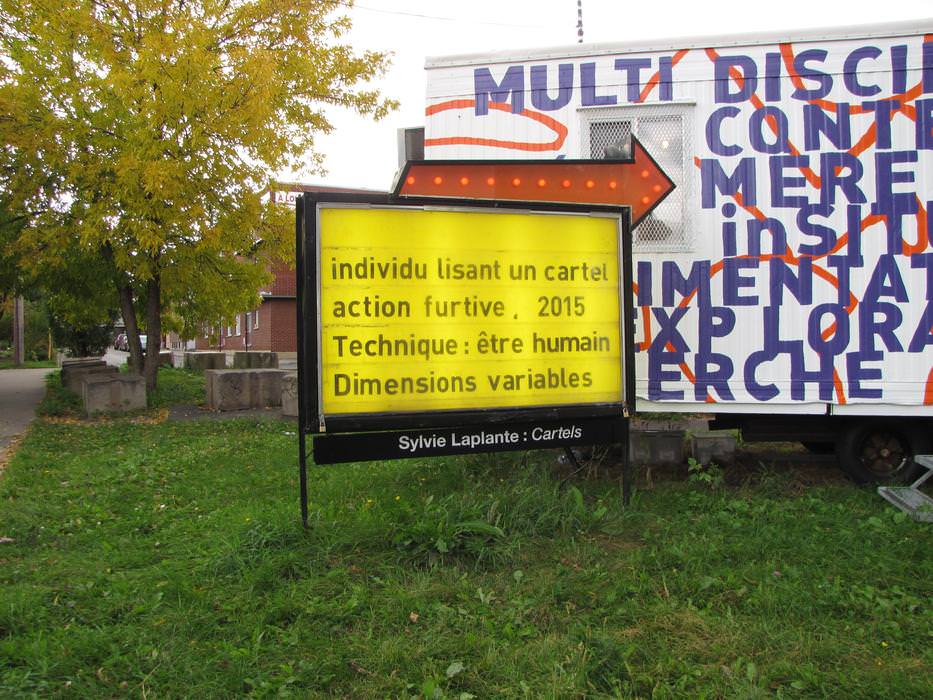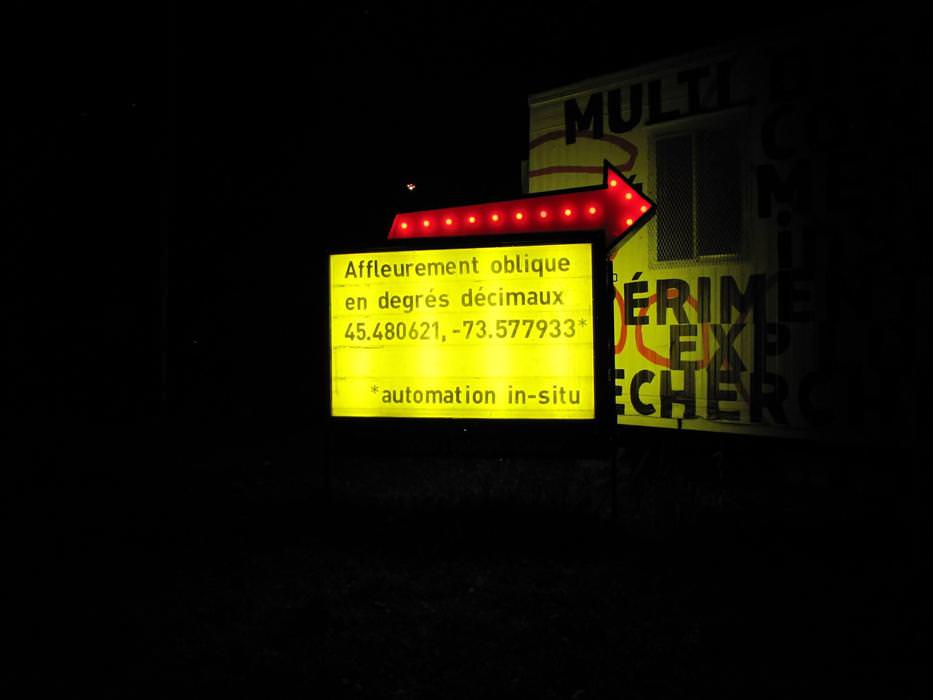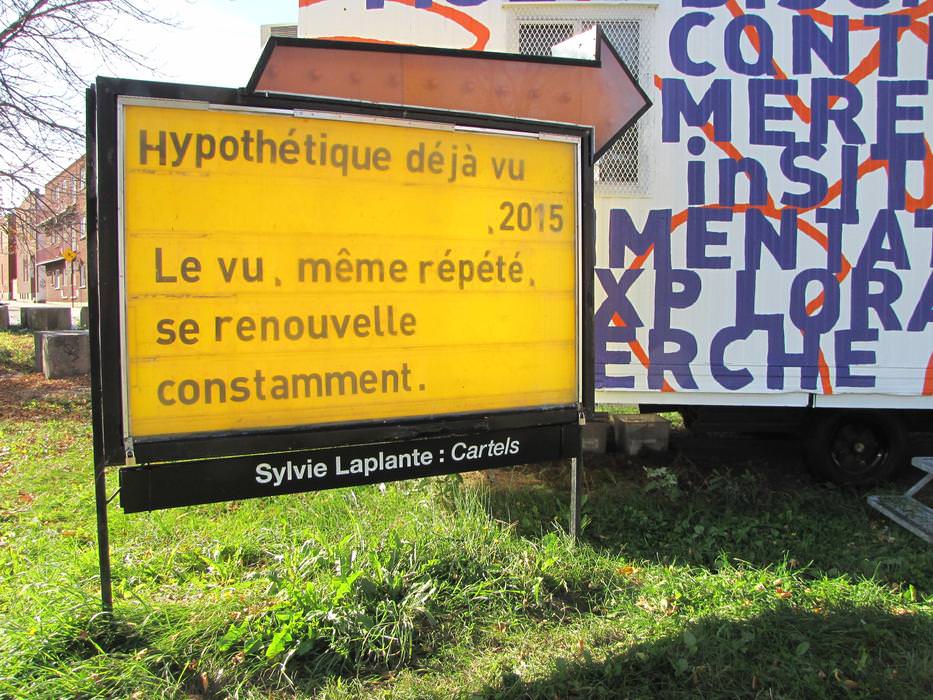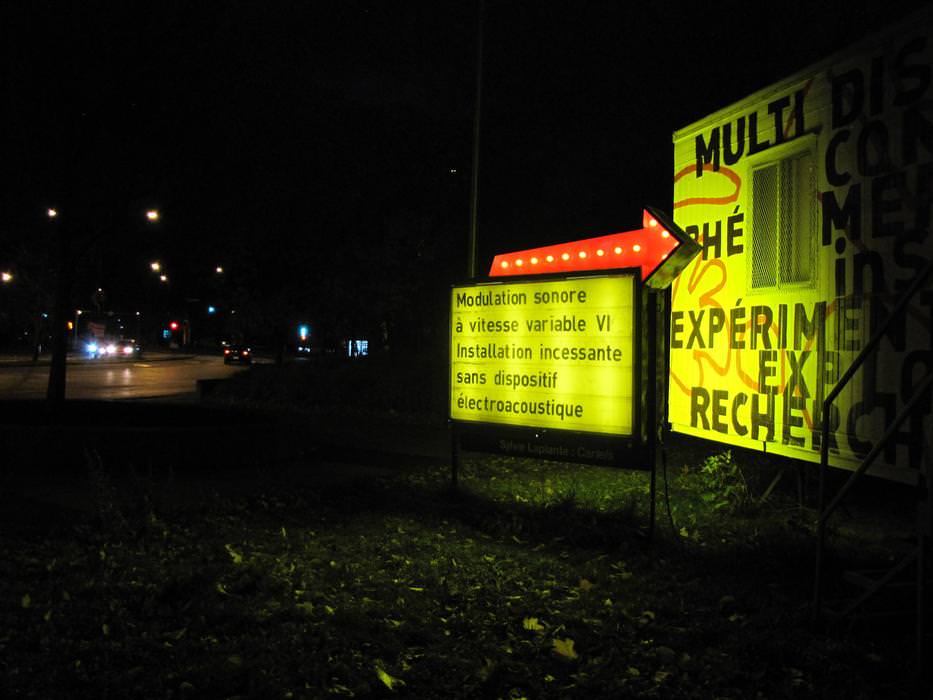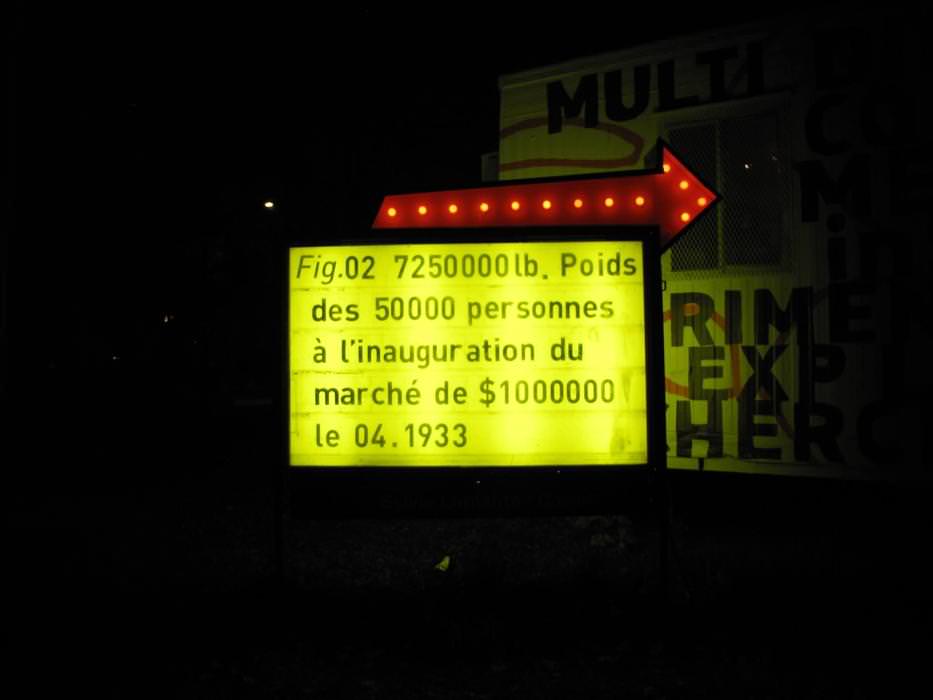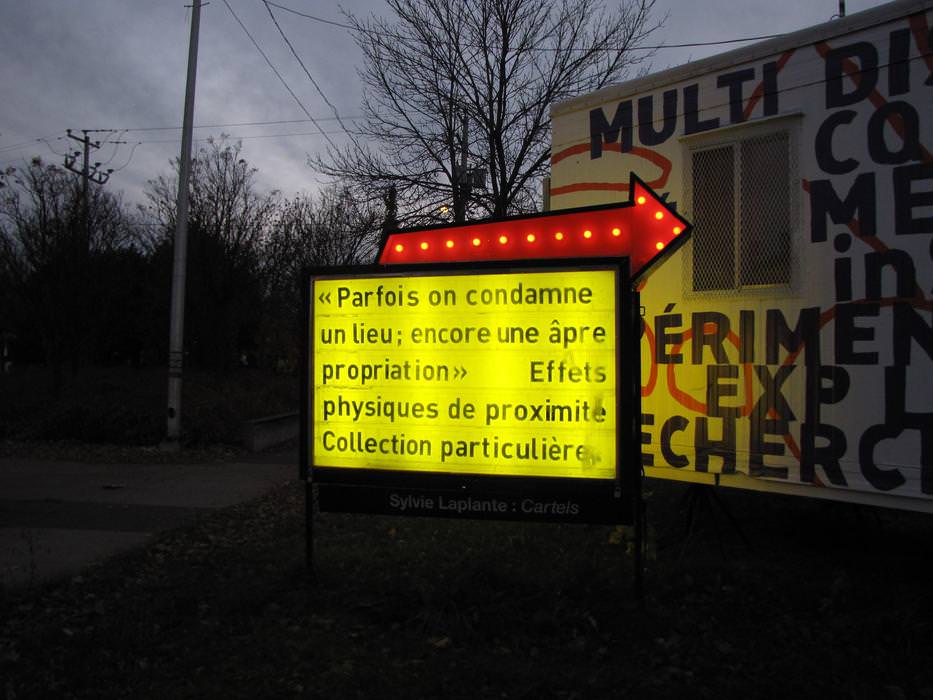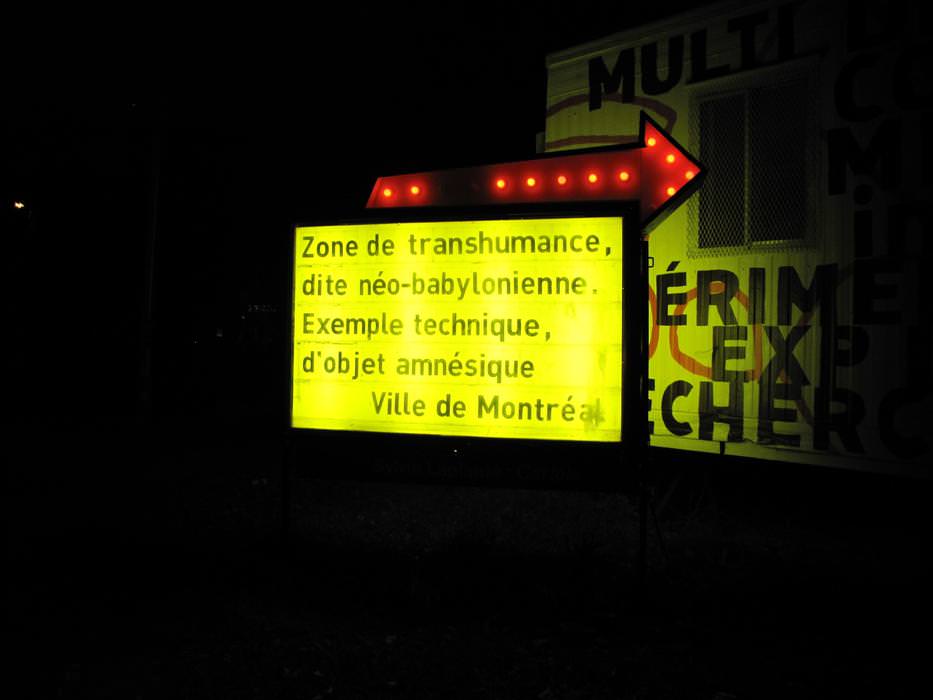Programming
SYLVIE LAPLANTE
CARTELS
I stood in front of the space that contains the yellow luminous board. Questions arose like queries, challenges or games proposals. It looked like the beginning of dialogues.
View more
I stood in front of the space that contains the yellow luminous board. Questions arose like queries, challenges or games proposals. It looked like the beginning of dialogues. The place appeared to me as a formal piece of work, suspended in space; the luminous board became the cartel that accompanies a work that is exposed.
In general, in museums and galleries, the cartel is affixed on the wall beside the work it relates to or sometimes on the framing of a painting. But on the mooring field of Dare Dare Headquarter, it is part of the composition. In ancient paintings, the «cartellino» was a representation of a cartel painted by the artist within his painting, figuring a descriptive text with a date and signature, an integrated cartel which comments, adds and transforms just as do stage directions in a theatrical text.
Inscription or legend, the cartel usually contains: title, name of author, date of creation, to which are sometimes added: techniques and materials employed, dimensions, place of conservation, ownership, legacy or loan, number of inventory, etc. Certain cartels exceed their function, disrupt the work, make diversion or create mises en abyme, usurpation: Ceci n'est pas une pipe.
Here are suggestions of cartels proposed for a reflective, historical, geomorphological, geopolitical, surrealist, chemical or dramaturgical perception...
Statement and practice
My school is that of theater, visual arts, travel. In my approach, I am interested in the organizational display of the world and in the physical encounter with spaces, ways to access, of displacement and crossing, and I question tourism. I am also interested in forms of transpositions and evocations of spaces. In my practice, the course of trajectories allows me to apprehend spaces with search games, inversions and cheerfulness, by means of which personal stories are created relating to specific locations. The visual works may take the forms of narrative maps or cartographic narrations, where each has its own theorem. I use different mediums such as audio recordings, drawings, installations, artifacts collections, sculpture, videos and photographic documentation.
Major in design-art at Concordia University and theater at University of Quebec in Montreal (UQAM), and in France. Worked with different theater groups from 1994 to 2003. Home : Montréal.
